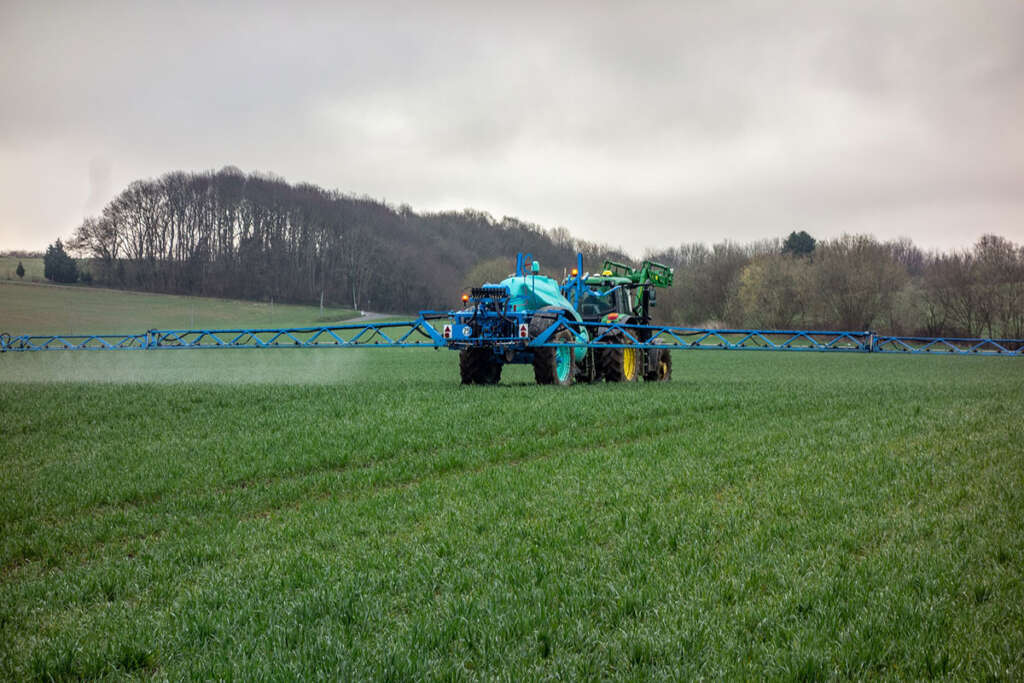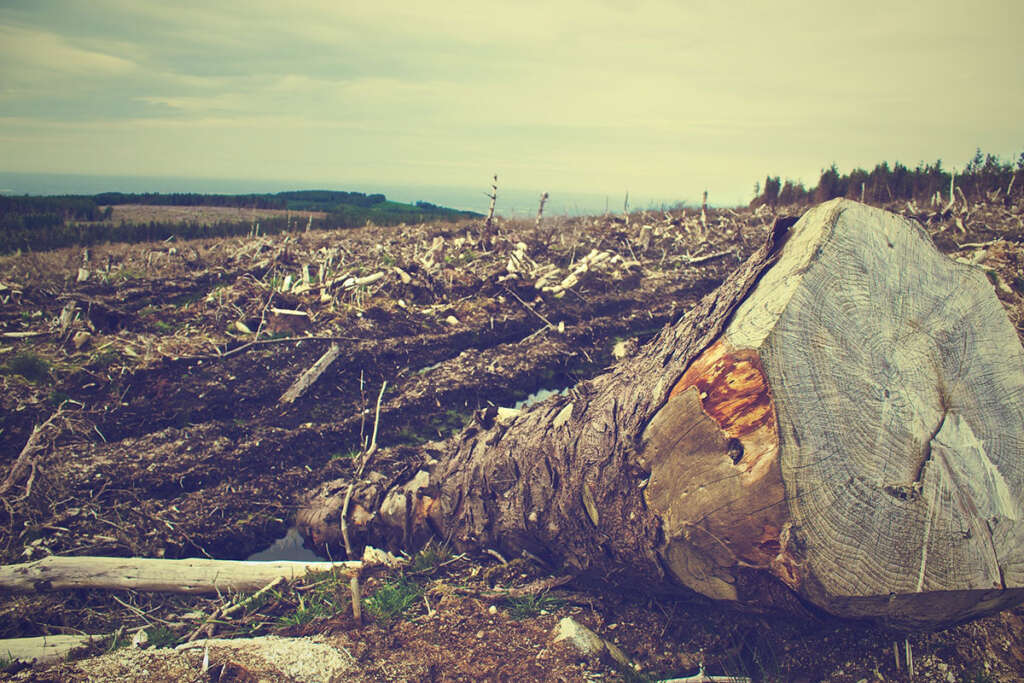More than one third of the global land surface is used for agriculture, about 5 billion hectares. With the population boom in the 20th century, unfortunately, the use of synthetic agricultural chemicals – fertilizers, pesticides, herbicides, and fungicides – has become inevitable to ensure everyone has enough food. But, combined with monoculture farming, their massive use is a huge problem for the environment and your health.
The main reason for the use of chemicals in agriculture is to increase crop yields and protection from pests, diseases and weeds. They enable farmers to harvest more crop per acre and they help in managing crop quality and uniformity. But at what cost?
The impacts of chemicals
For humans, these chemicals (especially pesticides) can have various health effects ranging from acute poisoning to long-term conditions such as cancer, reproductive issues, and neurological disorders. The residues of these chemicals on food products can pose risks to consumers. Think about your lemonade at your favorite diner or café: you should wonder how carefully they wash those fruits and how effectively they can be washed at all. The peel of citrus can even contain multiple toxic chemicals, with names such as imazalil, thiabendazole, propiconazole, and the list is way longer. Sounds good, right? Most of them are linked to cancer or have the potential to be carcinogenic or they are at least toxic in some way.
The runoff from chemicals can harm non-target species, including insects (the good kinds), birds, and aquatic organisms. When they get into groundwater or other water bodies, they contaminate drinking water sources and aquatic ecosystems which makes water unsafe for consumption and recreational activities. Remember Flint? Their water is still not safe to drink (at least without a filter) partly because of agriculture.

Pesticides
Pesticides include herbicides, fungicides, bactericides, insecticides, plant growth regulators, and rodenticides. Globally, about 3.5 million metric tons of pesticides are dispersed by the agriculture each year, and even more chemical fertilizer is used: approx. 200 million metric tons.
Herbicides
Herbicides are in use to control unwanted plants and weeds in agricultural and non-agricultural places. They can reduce plant diversity by eliminating species that are crucial for ecosystem balance. This loss affects not just the targeted weeds but also non-target plants, leading to a decrease in habitat and food sources for wildlife, including pollinators like bees and butterflies.
Certain herbicides can harm soil microorganisms, which play a critical role in nutrient cycling and soil structure maintenance. Disrupting these microorganisms can lead to diminished soil fertility and increased vulnerability to erosion, especially when they are used in combination with fertilizers.
The widespread and repeated use of herbicides can lead to the evolution of resistant weed species. This resistance necessitates the use of higher doses or more toxic herbicides to achieve the same level of control, creating a vicious cycle.
What do they do to humans?
Direct exposure to pesticides can cause immediate health effects, including skin and eye irritation, nausea, dizziness, and respiratory issues. Long-term exposure has been linked to serious health issues, including cancer (such as non-Hodgkin lymphoma), reproductive and developmental problems, liver and kidney damage, and neurological disorders. Maybe the world’s most infamous pesticide is Monsanto’s (belonging now to Bayer) Roundup. As of February 2024, 165,000 cancer claims have been filed against Bayer and Monsanto.
Fertilizers
The three main ingredients in chemical fertilizers are nitrogen, phosphorus, and potassium. Leaking into groundwater or local water bodies, they can spark a process called eutrophication of lakes, rivers, and coastal ecosystems. Eutrophication results in algal blooms that deplete oxygen in the water, harming aquatic life and making water unsafe for drinking and swimming.
They can harm natural soil chemistry, too by reducing its fertility over time which can lead to acidification, decrease in organic matter, and imbalance in soil nutrients, making soils less productive and reducing their ability to support plant life. Another vicious cycle: many farmers use more and more fertilizers in a never ending combat to offset the effects of soil depletion their extensive and chemical heavy practices cause.
Through their uniform nutrient availability, chemical fertilizers promote the growth of only a limited range of plant species. Those species can outcompete and reduce the variety of other plants and animals in the ecosystem which leads to a decrease in biodiversity.
Many chemical fertilizers release greenhouse gases, such as nitrous oxide, during their production and when they break down in the soil. Needless to say, this contributes to global warming and climate change.
What do they do to humans?
The leaching of nitrates from fertilizers into groundwater can lead to nitrate pollution in drinking water. High levels of nitrates in drinking water are associated with methemoglobinemia or “blue baby syndrome” in infants and can increase the risk of certain cancers.
Some chemical fertilizers contain heavy metals and other toxic substances. Long-term exposure to these chemicals, whether through water, air, or direct contact, can lead to health issues, including kidney damage, liver problems, and – of course – cancer. These heavy metals, along with other chemicals from fertilizers, can accumulate in the food chain. Consuming plants and animals that have absorbed these compounds can also have the same effects as direct contact.
Organic farming
On the bright side, organic farming has been on the rise. But with 96 million hectares it’s still just 2% of all agricultural land in the world. Organic farming doesn’t damage soil, biodiversity and ecosystem balance. While organic practices tend to have 19% lower yields than conventional agriculture on average as well as higher costs, they offer benefits in terms of reduced pollution, better soil fertility, and clean and more nutritious crops.
Polycultures, conservation agriculture, integrated pest management, permaculture, crop rotation, crop diversity, biofertilizers, and biopesticides are the alternatives to synthetic agriculture. By buying organic products of local, small scale farmers, you choose a much healthier way of life.
Wrapping up
Conventional farming is slowly killing the environment and poisoning humans. Synthetic chemicals are used in astronomical amounts which needs to stop. Choose organic.
How can I reduce my exposure to agricultural chemicals?
You can minimize exposure by washing fruits and vegetables and choosing organic produce. There are countless tips on the internet as to how to get rid of chemical residues remaining on fruits and vegetables but who knows how effective those methods are. The most common advice is washing them in warm water for more than a minute. That seems a hell of waste of resources so the best is to buy organic whenever possible.
Are there any safe levels of pesticide residues on food?
Regulatory agencies establish maximum residue limits (MRLs) to ensure that the levels of pesticide residues on foods are safe for human consumption. But let’s not forget that cancer rates are rising and that might not be the case only because of changing lifestyle and addictions.
How does organic farming impact crop yields compared to conventional farming?
Organic farming typically results in lower yields compared to conventional farming, but the gap can be minimized with improved organic farming techniques and crop varieties.
Sources


